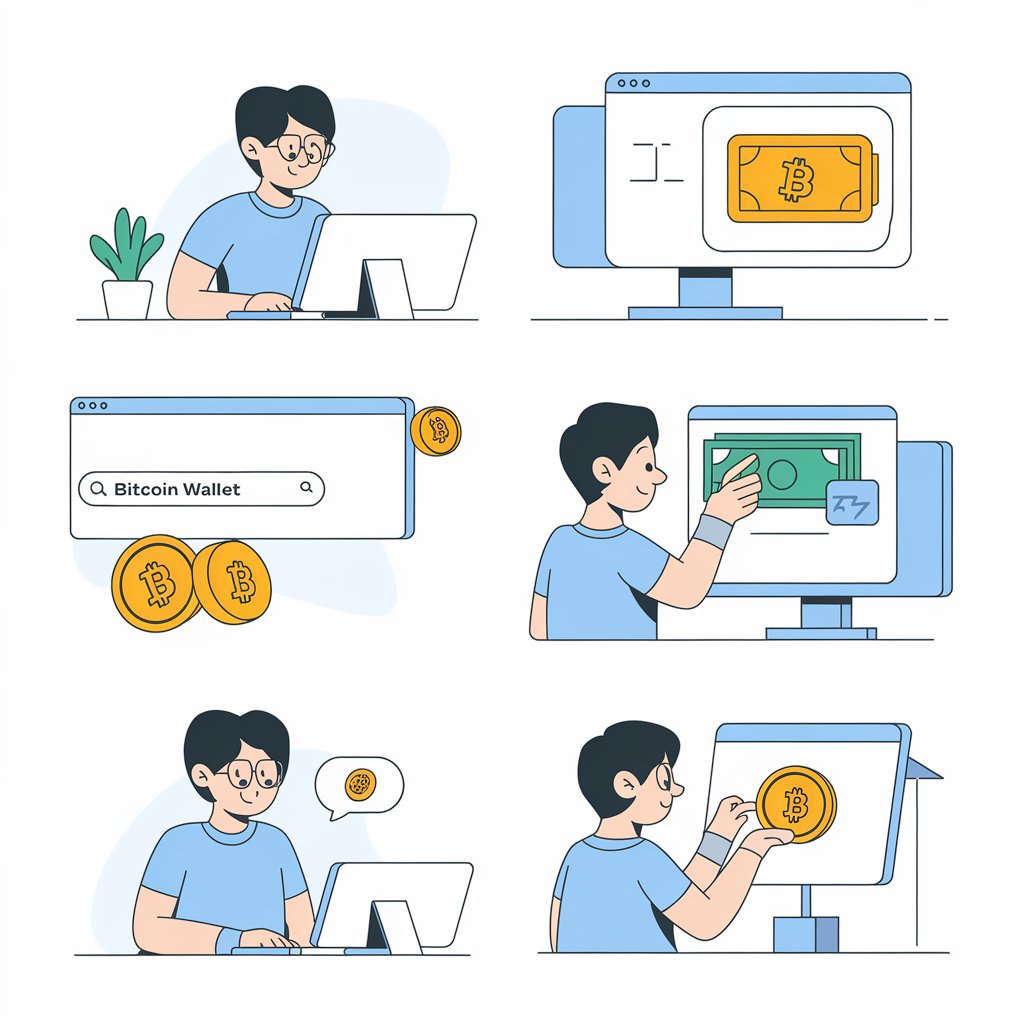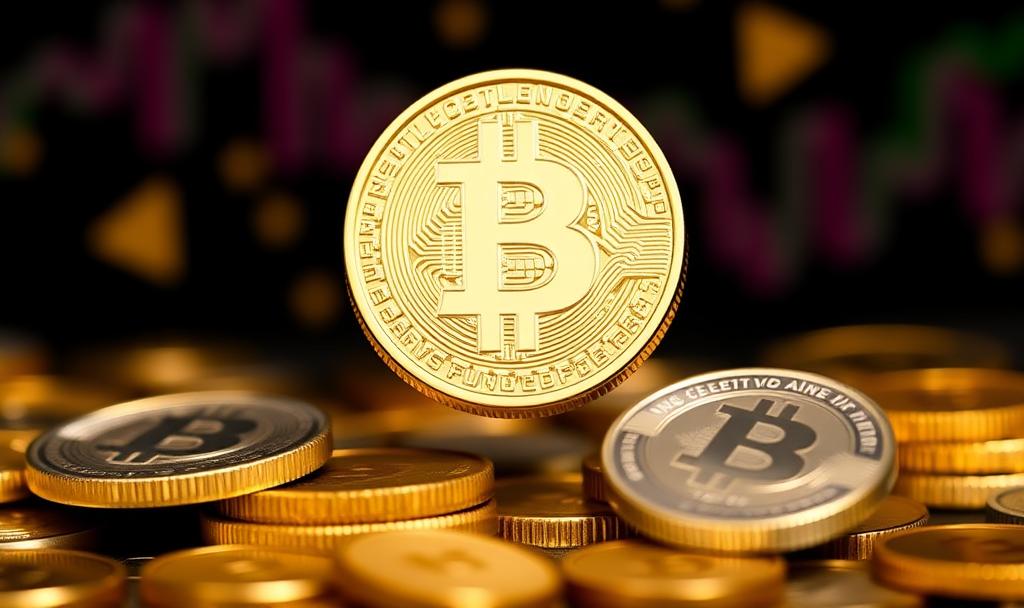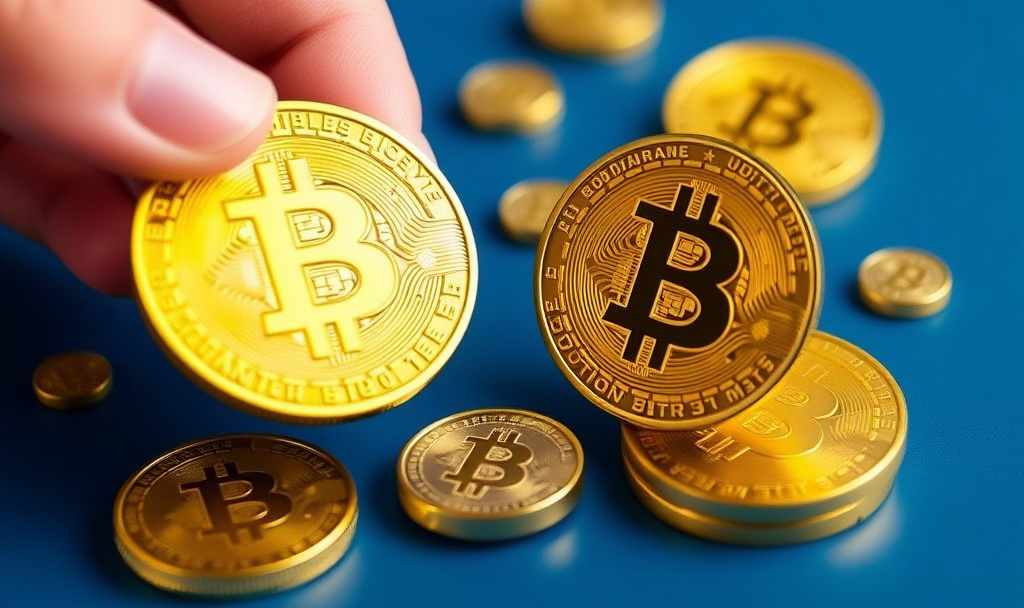Welcome to this in-depth guide on how to buy your first bitcoin! If you’re new to the world of cryptocurrency and feeling a little overwhelmed by all the buzz around Bitcoin, don’t worry—you’re in the right place.
We’ll walk you through everything from the basics of the blockchain to choosing a safe wallet and the best exchange to make your first purchase. By the end of this article, you’ll feel confident and empowered to take your first steps into the exciting world of crypto investments.
And if you want to stay updated with the latest tips, strategies, templates, and tools to navigate the market, be sure to subscribe to the Your Crypto Digest Newsletter!
Understanding Bitcoin and the Cryptocurrency Landscape
Before diving into the process of purchasing Bitcoin, let’s take a quick look at what Bitcoin is and why it matters.
Bitcoin is the original cryptocurrency that introduced the revolutionary concept of blockchain technology—a decentralized digital ledger that records transactions in a secure and transparent way.
Unlike traditional currencies controlled by governments and banks, Bitcoin is powered by a network of computers around the globe. This decentralization means that you, as an individual investor, have more control over your finances.
A Bit of History and Stats
- Bitcoin was created in 2009 by an anonymous figure known as Satoshi Nakamoto.
- As of early 2025, Bitcoin is valued at around $25,000 per coin, though prices can fluctuate significantly. You can check live prices on CoinMarketCap.
- Over the years, Bitcoin has been hailed as both a speculative asset and a potential hedge against economic uncertainty. Its market capitalization has often exceeded $500 billion, making it one of the most valuable cryptocurrencies in the world.
Why Consider Buying Bitcoin?
Investing in Bitcoin is not just about joining a trend; it’s about participating in a global shift toward decentralized finance. Many people are attracted to Bitcoin because:
- It offers the possibility of high returns (albeit with high risk).
- It represents a shift away from traditional financial systems.
- It provides a hedge against inflation and currency devaluation.
As you embark on this journey, remember that like any investment, buying Bitcoin comes with risks. However, with proper research and the right tools, you can minimize those risks and make informed decisions.
Step-by-Step Guide to Buying Your First Bitcoin
Let’s break down the process into simple, manageable steps. This guide is designed for beginners and uses plain language so that anyone—even if you’re not a tech wizard—can follow along.
Step 1: Do Your Research
Before spending any money, it’s essential to educate yourself about cryptocurrency. Here are some key points to consider:
- Understand Volatility: Bitcoin prices can be very volatile. Read up on recent trends and historical data.
- Learn the Terminology: Get comfortable with terms like blockchain, wallet, exchange, private key, and public key.
- Follow Reliable Sources: Websites like CoinDesk, CoinTelegraph, and even our Your Crypto Digest Newsletter provide reliable news and analysis.
Step 2: Choose a Cryptocurrency Exchange
An exchange is a platform where you can buy, sell, and trade cryptocurrencies. When choosing an exchange, consider:
- Security: Look for exchanges that offer strong security measures like two-factor authentication (2FA) and cold storage for funds.
- User-Friendliness: As a beginner, you want an intuitive platform.
- Fees: Be aware of trading fees and withdrawal fees. Some popular exchanges include Coinbase, Binance, and Kraken.
Pro Tip: Many experts recommend starting with Coinbase due to its simplicity and robust security features, even though the fees might be slightly higher.
Step 3: Set Up Your Bitcoin Wallet
Your wallet is where your Bitcoin will be stored. Think of it as your digital bank account. There are several types of wallets:
- Software Wallets: These are apps you install on your computer or phone (e.g., Exodus or Electrum). They offer convenience but can be vulnerable if your device is hacked.
- Hardware Wallets: These physical devices (e.g., Ledger or Trezor) are considered one of the safest ways to store cryptocurrency because they are offline and immune to online hacks.
- Mobile Wallets: These are similar to software wallets but are optimized for smartphones (e.g., Trust Wallet).
For beginners, a software or mobile wallet might be sufficient until you’re ready to invest more heavily and seek enhanced security with a hardware wallet.
Step 4: Fund Your Account
Once you’ve chosen an exchange and set up your wallet, the next step is to fund your account. Most exchanges allow you to link your bank account, debit card, or even credit card. Here’s how to do it:
- Link Your Payment Method: Follow the exchange’s instructions to connect your bank account or card.
- Deposit Funds: Transfer the amount you’re comfortable investing. If you’re just starting, you might want to begin with a small amount to get a feel for the process.
- Verify Your Identity: Many exchanges require you to complete a Know Your Customer (KYC) process. This may involve uploading a government-issued ID and possibly a selfie.
Step 5: Buy Your Bitcoin
Now that your account is funded, you can finally purchase Bitcoin! Here’s a simple guide:
- Navigate to the Trading Section: Most exchanges have a “Buy/Sell” or “Trade” section.
- Select Bitcoin: Choose Bitcoin (BTC) from the list of cryptocurrencies.
- Choose the Purchase Method: You can typically select a market order (buy immediately at the current price) or a limit order (set a specific price at which you want to buy).
- Confirm Your Purchase: Double-check the amount you’re buying and the fees, then confirm the transaction.
- Store Your Bitcoin: Once purchased, transfer your Bitcoin from the exchange to your personal wallet for enhanced security.
Important Reminder: Never leave large amounts of cryptocurrency on an exchange. Exchanges are convenient for trading, but personal wallets offer better long-term security.
Tips, Pitfalls, and Best Practices
As with any investment, buying Bitcoin comes with risks. Here are some practical tips to ensure you have a safe and successful experience:
1. Start Small and Scale Up
If you’re new to the game, don’t invest money you can’t afford to lose. Start with a small amount and gradually increase your investment as you become more comfortable and knowledgeable about the market.
2. Keep Your Private Keys Safe
Your private key is the secret code that allows you to access your wallet. Never share it with anyone, and consider writing it down and storing it in a safe place. Losing your private key means losing access to your Bitcoin forever.
3. Diversify Your Investment
While Bitcoin is the most well-known cryptocurrency, consider diversifying your portfolio with other cryptocurrencies such as Ethereum (ETH), Litecoin (LTC), or Ripple (XRP). Diversification can help spread risk, but always do thorough research before investing in any new asset.
4. Beware of Scams
The cryptocurrency world is rife with scams. Be skeptical of any “too good to be true” offers, and only use reputable exchanges and wallets. Research and verify any platform before making a deposit. Check reviews, regulatory compliance, and community feedback.
5. Stay Informed
The crypto market evolves rapidly. Join communities on Reddit, follow Twitter accounts of reputable analysts, and subscribe to newsletters like Your Crypto Digest Newsletter to receive the latest updates and insights.
Delving Deeper: Understanding the Risks and Rewards
Investing in Bitcoin can be an exciting venture, but it’s crucial to balance optimism with caution. Here are some key considerations regarding the risks and rewards of Bitcoin investment:
Rewards:
- Potential for High Returns: Historically, Bitcoin has experienced significant price increases over time. Early investors have seen astronomical gains.
- Decentralization: Bitcoin’s decentralized nature means it is not directly influenced by government policies or economic downturns in any one country.
- Growing Adoption: As more businesses and institutions accept Bitcoin, its legitimacy and stability as an asset class continue to grow. Major companies and financial institutions are increasingly incorporating Bitcoin into their portfolios.
Risks:
- Volatility: Bitcoin prices can swing wildly within a short period. This volatility can result in high gains but also steep losses.
- Regulatory Uncertainty: The regulatory environment for cryptocurrencies is still evolving. New regulations can affect market dynamics, and sudden changes might impact your investments.
- Security Concerns: Despite significant advances in blockchain technology, the security of your assets depends heavily on how you store and manage your private keys.
According to a 2023 report by Statista, Bitcoin has delivered impressive annual returns in the past, though past performance is not indicative of future results. As with any investment, it’s important to balance risk with potential rewards and only invest amounts you’re comfortable with.
Security Measures: Protecting Your Investment
In the digital realm, security is paramount. When buying and storing Bitcoin, consider the following best practices to safeguard your investment:
Choosing Secure Platforms
- Research the Exchange: Before creating an account, read reviews, check regulatory status, and verify security measures. Reputable exchanges like Coinbase, Binance, and Kraken have robust security protocols.
- Enable Two-Factor Authentication (2FA): This extra layer of security ensures that even if someone obtains your password, they cannot access your account without the second factor.
- Use Secure Connections: Always access your exchange and wallet using secure, private networks rather than public Wi-Fi.
Wallet Security
- Hardware Wallets for Long-Term Storage: For significant holdings, consider a hardware wallet. Devices like Ledger and Trezor store your private keys offline, making them immune to online hacks.
- Backup Your Wallet: Always keep a secure backup of your private keys or recovery seed phrase. Store this backup in a safe, offline location.
- Regularly Update Software: Keep your wallet and any related applications updated to the latest versions to ensure you benefit from improved security features.
Avoiding Common Pitfalls
- Phishing Scams: Be wary of emails or messages that ask for your personal information or direct you to suspicious websites. Always verify URLs and never click on links from unknown sources.
- Fake Apps and Websites: Only download wallet apps from official app stores and use the official website of your exchange. Double-check the URL for typos or unusual domain extensions.
By taking these precautions, you significantly reduce the risk of falling victim to hacks or scams, ensuring that your Bitcoin investment remains secure.
Diving Into Advanced Strategies (For the Future)
Once you’ve mastered the basics of buying and securely storing Bitcoin, you might be curious about more advanced strategies such as trading, staking, or even exploring decentralized finance (DeFi). While this guide is focused on your first purchase, here are a few pointers on where to go next:
Trading vs. Investing
- Long-Term Holding (HODLing): Many early adopters advocate for a long-term strategy, holding onto Bitcoin through its ups and downs. This method, often referred to as “HODLing,” is popular among those who believe in the future of cryptocurrency.
- Active Trading: Some investors prefer to actively trade, taking advantage of Bitcoin’s volatility. This requires a deeper understanding of technical analysis and market trends. If you’re interested in this approach, be sure to learn from trusted resources and perhaps even practice with a demo account first.
Other Investment Avenues
- Diversification: As mentioned earlier, diversifying your investment portfolio can help mitigate risk. Explore other cryptocurrencies and assets like Ethereum, Litecoin, or even emerging projects.
- Staking and Yield Farming: In the world of DeFi, many projects offer opportunities to earn passive income by staking your assets or participating in yield farming. Research these strategies thoroughly before diving in, as they come with their own set of risks.
For advanced strategies, consider following specialized blogs, joining forums, or subscribing to newsletters like Your Crypto Digest Newsletter for the latest strategies, templates, and tools.
Data, Sources, and Further Reading
To make informed decisions, always rely on data and reputable sources. Here are some valuable links and resources:
- CoinMarketCap: Bitcoin Price and Market Data
- CoinDesk: Cryptocurrency News and Analysis
- CoinTelegraph: Latest Updates in Cryptocurrency
- Statista: Bitcoin Annual Returns Statistics
- Bitcoin.org: Official Bitcoin Information
Additionally, many exchanges and wallets offer educational sections on their websites, including tutorials and FAQs, to help you understand the ins and outs of the cryptocurrency market.
Real-World Examples and Success Stories
Hearing success stories can be incredibly motivating when starting out in cryptocurrency. Consider these examples:
- The Early Adopter: Many individuals who bought Bitcoin in its early days have seen incredible returns. While this isn’t a guarantee for future performance, it illustrates the potential long-term benefits of investing in a pioneering technology.
- Institutional Interest: Recently, several major companies and financial institutions have begun investing in Bitcoin. This institutional interest has helped legitimize the asset and contributed to its growing stability.
- Everyday Users: Stories abound of everyday people who started with a small investment and gradually increased their holdings as they learned more about the market. These stories remind us that you don’t need a fortune to get started—you just need curiosity, caution, and the willingness to learn.
Frequently Asked Questions
Q: Is Bitcoin a safe investment?
A: Bitcoin is considered a high-risk, high-reward asset due to its volatility. While it offers the potential for significant returns, it is essential to invest only what you can afford to lose and to follow strict security practices.
Q: Do I need technical expertise to buy Bitcoin?
A: Not at all! Platforms like Coinbase and Binance are designed with beginners in mind. This guide provides you with simple, step-by-step instructions to help you navigate the process.
Q: How much Bitcoin should I buy?
A: There is no one-size-fits-all answer. Many experts recommend starting with a small amount to get familiar with the process. You can always scale up your investment as you gain confidence and experience.
Q: What if I lose my wallet or private key?
A: Losing your private key can result in losing access to your Bitcoin forever. That’s why it’s crucial to back up your keys securely and consider using hardware wallets for larger investments.
Final Thoughts and a Call to Action
Buying your first Bitcoin is more than just a financial transaction—it’s the beginning of an exciting journey into a new era of digital finance. Whether you’re motivated by the potential for high returns, the allure of decentralized finance, or simply the desire to be part of a transformative technology, this guide has equipped you with the basics to get started.
Remember:
- Educate yourself: Knowledge is your best defense against volatility and scams.
- Start small: Ease into the market and increase your investment as you learn.
- Secure your assets: Always prioritize security by using trusted exchanges and reliable wallets.
- Stay updated: The world of cryptocurrency evolves rapidly. Join communities, follow reputable sources, and subscribe to our newsletter.
Before you go, don’t forget to subscribe to the Your Crypto Digest Newsletter!
With our newsletter, you’ll receive exclusive tips, strategies, templates, and tools designed to help you navigate the cryptocurrency landscape like a pro. Our community of savvy investors and experts is here to support you every step of the way.
Wrapping Up
In this guide, we’ve covered everything from the basics of Bitcoin and blockchain technology to the practical steps of setting up an exchange account, choosing the right wallet, and making your first purchase. We also discussed the importance of security and provided resources to keep you informed.
Investing in Bitcoin can seem daunting at first, but with the right information and a cautious approach, it can be a rewarding experience. Remember, every expert was once a beginner. Take your time, do your research, and enjoy the journey into the world of cryptocurrency.
If you found this guide helpful, please share it with friends and family who might also be interested in learning how to buy their first Bitcoin. And if you have any questions or need further clarification, feel free to drop a comment or reach out through our newsletter.
Final Checklist for Your First Bitcoin Purchase
Before you complete your first Bitcoin purchase, run through this checklist:
- Research: Have you read up on Bitcoin and its market trends?
- Exchange: Have you chosen a reputable, user-friendly exchange?
- Wallet: Is your wallet set up and secure?
- Funding: Have you linked your payment method and deposited funds?
- Purchase: Did you review the transaction details before confirming your Bitcoin purchase?
- Security: Have you enabled 2FA and backed up your private keys?
By ticking off each item on this list, you’ll be well on your way to a safe and informed investment in Bitcoin.
Conclusion
Congratulations on taking the first step towards purchasing your first Bitcoin! The world of cryptocurrency offers incredible opportunities, but it’s essential to proceed with knowledge and caution.
With the tools and strategies outlined in this guide, you’re now ready to dive in and start your crypto journey.
Stay curious, keep learning, and never hesitate to seek advice from trusted sources. And remember—if you ever need a refresher or new insights, our Your Crypto Digest Newsletter is just a click away.
Here, you’ll find continuous updates, market analysis, and insider tips to help you navigate the ever-changing world of Bitcoin and beyond.




